I deliberately used non porous rock and plastic aerated media. No problems detected thus far.Does this then imply that not only is porosity in rocks poor conduit for nitrification/denitrification but also claims of using porpous materials such as Matrix (pumice) and bricks by Brightwell and Marine Pure nothing more than marketing without function?
Navigation
Install the app
How to install the app on iOS
Follow along with the video below to see how to install our site as a web app on your home screen.
Note: This feature may not be available in some browsers.
More options
You are using an out of date browser. It may not display this or other websites correctly.
You should upgrade or use an alternative browser.
You should upgrade or use an alternative browser.
Ammonia as route cause to all nuisance in the hobby.
- Thread starter sixty_reefer
- Start date
- Tagged users None
sixty_reefer
5000 Club Member
View BadgesArticle Contributor
UK Reef Club Member
Hospitality Award
R2R Research
Thank you just started reading it and already looks interesting, will finish it of later after work.@sixty_reefer This may interest you
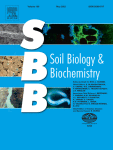
Heterotrophic nitrification – An eternal mystery in the nitrogen cycle
Despite the fact that heterotrophic nitrification was identified more than 100 years ago, the biochemistry of heterotrophic nitrifiers is poorly known…reader.elsevier.com
Sincerely Lasse
As nitrification media - you have solved the Gordian knot - In the long run it is not better than to use a solid plastic brick. As denitrification media it can work but in very slow paste - mostly the same way as an DSB - if you use DOC at the same time (Dissolved Organic Carbon)Does this then imply that not only is porosity in rocks poor conduit for nitrification/denitrification but also claims of using porpous materials such as Matrix (pumice) and bricks by Brightwell and Marine Pure nothing more than marketing without function?
Sincerely Lasse
As nitrification media - together with a strong stream of oxygen rich water through the filter media - its perfectI deliberately used non porous rock and plastic aerated media.
Sincerely Lasse
We are back to external surface area then. Interesting.As nitrification media - you have solved the Gordian knot - In the long run it is not better than to use a solid plastic brick. As denitrification media it can work but in very slow paste - mostly the same way as an DSB - if you use DOC at the same time (Dissolved Organic Carbon)
Sincerely Lasse
sixty_reefer
5000 Club Member
View BadgesArticle Contributor
UK Reef Club Member
Hospitality Award
R2R Research
This explains why aquabiomics testing often comes back with low nitrifying bacteria in the systems. The area they colonise has a lot of competition for ammonia.We are back to external surface area then. Interesting.
Note - I have not tested either of the methods you mentioned. I base my opinion on only known methods for efficient nitrification and denitrification. There is a process described as recently as 1999 that to my knowledge has not yet been confirmed in aquarium conditions - namely anammox, It is a process where NH4 is oxidized under oxygen-free conditions. Theoretically, it could occur in a "bio block" but it requires some type of flow through - IMO - and this special strains of bacteria.We are back to external surface area then. Interesting.
Sincerely Lasse
Well yes, also corals, plants, algae, etc. may draw on the ammonia as well. This would explain why a tank whose rock is totally covered in corals is not going to kill your fish with ammonia poisoning. It also would suggest then that bottled bacteria is not really helpful except in getting a tank fish ready very fast.This explains why aquabiomics testing often comes back with low nitrifying bacteria in the systems. The area they colonise has a lot of competition for ammonia.
sixty_reefer
5000 Club Member
View BadgesArticle Contributor
UK Reef Club Member
Hospitality Award
R2R Research
All autotrophic organisms living in the rock surface will use ammonia (nuisance or beneficial). Have you ever seen a live rock next to a dry rock during a tank cycling and the live rock stays nice and clean and the rest of the tank is full of diatoms? The surface of the rock is full of life to deal with the ammonia that’s the only difference.Well yes, also corals, plants, algae, etc. may draw on the ammonia as well. This would explain why a tank whose rock is totally covered in corals is not going to kill your fish with ammonia poisoning. It also would suggest then that bottled bacteria is not really helpful except in getting a tank fish ready very fast.
With bottled bacteria we back at nutrient and carbon dosing to manage ammonia, folks don’t realize that most product aimed at cleaning are actually dosing DOC with some bacteria that most likely is already present in the system, one could get the same benefits by just dosing DOC.
Hi sixty_reefer, just to provide some clarification about my article. The method to erradicate dinoflagelates is based on carbon dosing, that is mainly simple chemical forms like alcohol, acetic acid, glucose and so on. These "carbohydrates" are used mainly by heterotrophic bacteria, removing nitrate and phosphate when reproducing and building biofilms. In this process inorganic nutrients are reduced so less availability for algae.Seeing from the live rock test mentioned above demonstrating that live rock can’t deal with increasing ammonia levels effectively even in mature systems and much less effective in new systems as coxey test demonstrates I believe we have enough evidence to support ammonia being the culprit to all known nuisances during the ugly stage and during the systems maturing process. The tests mentioned above were verified by many knowledge members on R2R as they were happening and the way they were performed by several members brought consist results. In addition to those tests @Beuchat made several testing on how to eradicate dinoflagellates, from his article he mentioned that natural sources of carbohydrates make the eradication process more efficient, for those who know carbohydrates are used elsewhere in the hobby to stimulate the growth and division of nitrifying and denitrifying autotrophic bacteria, a very effective bacteria at processing ammonia into nitrates and nitrogen gas. My intention soon is to carry out a new test hopefully with enough information to demonstrate that all nuisances can be avoided during the ugly stage using natural sources of carbohydrates to keep ammonia levels under control in new systems making the ugly stage normality a thing from the past, so that many others don’t have to deal with a stage and nuisances that can be avoided by implementing good nutrition for beneficial bacteria from day one.
the testing thread can be find here for those curious on the results

72h cycle and avoiding the ugly stage
Some of you may have noticed that of late I have been fairly interested in nutrients and nutrition and how all this affect our systems, in this thread I will be attempting to cycle a system in 72 hours or less and demonstrate how the understanding of nutrients can avoid the ugly stage all...www.reef2reef.com
Nitrifying bacteria are autotrophic mainly, transforming amonia and nitrite into nitrate. These bacteria do not use organic carbon, they use inorganic carbon in the form of the dissolved CO2 in the aquarium water. The more nitrifying activity in the tank, the more nitrate will be generated (more risk of nuisance algae). So, we need to always balance with a denitrification process (using carbon dosing, for example).
Hope it helps.
Randy Holmes-Farley
Reef Chemist
View Badges
Staff member
Super Moderator
Excellence Award
Expert Contributor
Article Contributor
R2R Research
My Tank Thread
- Joined
- Sep 5, 2014
- Messages
- 67,311
- Reaction score
- 63,658
Hi sixty_reefer, just to provide some clarification about my article. The method to erradicate dinoflagelates is based on carbon dosing, that is mainly simple chemical forms like alcohol, acetic acid, glucose and so on. These "carbohydrates" are used mainly by heterotrophic bacteria, removing nitrate and phosphate when reproducing and building biofilms. In this process inorganic nutrients are reduced so less availability for algae.
Nitrifying bacteria are autotrophic mainly, transforming amonia and nitrite into nitrate. These bacteria do not use organic carbon, they use inorganic carbon in the form of the dissolved CO2 in the aquarium water. The more nitrifying activity in the tank, the more nitrate will be generated (more risk of nuisance algae). So, we need to always balance with a denitrification process (using carbon dosing, for example).
Hope it helps
I know you put the term carbohydrates in quotes, perhaps questioning the accuracy of the term, but I just want to reiterate a point I've made many times in other threads, neither ethanol nor acetic acid are really considered carbohydrates. Ethanol does not fit the strict definition, and despite fitting the literal definition, few if any chemists consider acetic acid a carbohydrate.
Thanks to all the contributers of this tread for sharing you knowledge.
My question is : In order to fight/avoid nuisance algeas, should the focus be on reducing Ammonia or Nitrate ?
Correct me if I'm wong, but I would expect the answer to be "both" since nuisance algeas are able to utilize N from both , but reducing ammonia increase nitrate.
I'm trying to find the right setup to keep my sps corals thriving and get rid of turf algeas, and thinking how to use the information from this thread.
Some sps corals has got the colour back, and new frags are growing
My tank (750L) is on the way back on track after "over-heating" this summer (high temperuture -> loss of micro fauna -> high ammonia -> high nutrients -> loss several fish and sps corals) and now having lots of turf algeas.
Dosing carbon (NP-bacto balance), TM ReesActif, live phyto and fish food (for the fish) also having a bucket refugium with chaeto.
Using patience, water changes, carbon dosing (and TM Elimi-Phos rapid) PO4 is lowered from 0,24 to 0,034 and NO3 from ++100 to 20.
I have implemented a filter instead of a BM fleeeceroller, it's like an open carnister filter made of seval layers of filter mat (26cm) providing a large surface for nitrifying bacteria and removing lots of material from the water. Currently cleaning the filter twice a week (super easy to clean changing the filtermats) .
But if I did not cleaned the filter that often more bacteria would grow on the surface area transforming more ammonia to nitrate
My question is : In order to fight/avoid nuisance algeas, should the focus be on reducing Ammonia or Nitrate ?
Correct me if I'm wong, but I would expect the answer to be "both" since nuisance algeas are able to utilize N from both , but reducing ammonia increase nitrate.
I'm trying to find the right setup to keep my sps corals thriving and get rid of turf algeas, and thinking how to use the information from this thread.
Some sps corals has got the colour back, and new frags are growing
My tank (750L) is on the way back on track after "over-heating" this summer (high temperuture -> loss of micro fauna -> high ammonia -> high nutrients -> loss several fish and sps corals) and now having lots of turf algeas.
Dosing carbon (NP-bacto balance), TM ReesActif, live phyto and fish food (for the fish) also having a bucket refugium with chaeto.
Using patience, water changes, carbon dosing (and TM Elimi-Phos rapid) PO4 is lowered from 0,24 to 0,034 and NO3 from ++100 to 20.
I have implemented a filter instead of a BM fleeeceroller, it's like an open carnister filter made of seval layers of filter mat (26cm) providing a large surface for nitrifying bacteria and removing lots of material from the water. Currently cleaning the filter twice a week (super easy to clean changing the filtermats) .
But if I did not cleaned the filter that often more bacteria would grow on the surface area transforming more ammonia to nitrate
Randy Holmes-Farley
Reef Chemist
View Badges
Staff member
Super Moderator
Excellence Award
Expert Contributor
Article Contributor
R2R Research
My Tank Thread
- Joined
- Sep 5, 2014
- Messages
- 67,311
- Reaction score
- 63,658
My question is : In order to fight/avoid nuisance algeas, should the focus be on reducing Ammonia or Nitrate ?
Correct me if I'm wong, but I would expect the answer to be "both" since nuisance algeas are able to utilize N from both , but reducing ammonia increase nitrate.
I do not think it is clear that either one is necessarily the answer.
Lowering nutrients in general is often not successful without hurting something you want to keep, and unless N is or becomes a limiting nutrient, it won't matter. In the case, something else is already limiting the growth (P, trace metals, light, space, etc.)
I’ve come to the conclusion that corals need ammonium and not nitrates. Another (don’t recall) recently mentioned the same and stated nitrates were merely a buffer should ammonium be absent. Went as far as recommending the dosing of ammonium chloride which makes sense. Plants and algae down concert nitrates and nitrites to ammonium. Taking that directly being more efficient. At least that’s my understanding of how plants and algae take in those types of nutrients.Thanks to all the contributers of this tread for sharing you knowledge.
My question is : In order to fight/avoid nuisance algeas, should the focus be on reducing Ammonia or Nitrate ?
Correct me if I'm wong, but I would expect the answer to be "both" since nuisance algeas are able to utilize N from both , but reducing ammonia increase nitrate.
I'm trying to find the right setup to keep my sps corals thriving and get rid of turf algeas, and thinking how to use the information from this thread.
Some sps corals has got the colour back, and new frags are growing
My tank (750L) is on the way back on track after "over-heating" this summer (high temperuture -> loss of micro fauna -> high ammonia -> high nutrients -> loss several fish and sps corals) and now having lots of turf algeas.
Dosing carbon (NP-bacto balance), TM ReesActif, live phyto and fish food (for the fish) also having a bucket refugium with chaeto.
Using patience, water changes, carbon dosing (and TM Elimi-Phos rapid) PO4 is lowered from 0,24 to 0,034 and NO3 from ++100 to 20.
I have implemented a filter instead of a BM fleeeceroller, it's like an open carnister filter made of seval layers of filter mat (26cm) providing a large surface for nitrifying bacteria and removing lots of material from the water. Currently cleaning the filter twice a week (super easy to clean changing the filtermats) .
But if I did not cleaned the filter that often more bacteria would grow on the surface area transforming more ammonia to nitrate
My current testing is to dose carbon to bottom out nitrates yet overfeed to ensure a constant flow of ammonium is present from detritus as well as that fish produce. Repeatedly letting nitrates escalate then drop via dosing. Nuisance algae shows itself when dosing is stopped then goes away when reintroduced. Currently have only one Xenia as a sacrificial canary in a coal mine but plan on adding softies and moving up the line to SPS to confirm this assumption.
No skimmer or WC. Will be sending an ICP out which I think will confirm my trace might be low in certain areas but purely speculation. Only animals that haven’t thrives being recently introduced Blue leg hermits. All seem dead. Yet various snails have survived. Some a year plus. Margaritas have even reproduced. Had an urchin that lasted several months. Xenia a couple of months plus.
I’d consider not cleaning that canister until flow impeded. An option being a combination of pumice and smaller gravel to trap detritus and allow it to decompose naturally. Remaining component being mulm (hummus) which takes less space and longer to clog. BTW, not convinced that cleaning bio media even in tap kills the underlying bacteria. Learned that long ago and used to not worry about that but current setup doesn’t allow me to do that but a test I’ll at some point conduct. Perhaps those with an actual scientific knowledge of nitrifying/denitrifying bacteria can confirm or correct my belief.
sixty_reefer
5000 Club Member
View BadgesArticle Contributor
UK Reef Club Member
Hospitality Award
R2R Research
Thank you I was just pointing out that the same thing you just said, stimulating the heterotrophic bacteria with DOC also reduces ammonia not just nitrates, and I was pointing out that you mentioned in the thread that carbohydrates ( glucose and molasses) in form of brown sugar were considered fairly efficient in aquaculture this form of carbohydrates mainly molasses is also used in biofloc in order to increase capacity in aquaculture being very effective at controlling ammonia in overstocked system.Hi sixty_reefer, just to provide some clarification about my article. The method to erradicate dinoflagelates is based on carbon dosing, that is mainly simple chemical forms like alcohol, acetic acid, glucose and so on. These "carbohydrates" are used mainly by heterotrophic bacteria, removing nitrate and phosphate when reproducing and building biofilms. In this process inorganic nutrients are reduced so less availability for algae.
O believe that dissolved organic carbon plays an essential role in the denitrification process as it supplies energy for N2O, N2 and CO2 producing reactions, if my understanding is not wrong, is not used directly by denitrifying bacteria. It’s commonly used in plenums to aid denitrification.Nitrifying bacteria are autotrophic mainly, transforming amonia and nitrite into nitrate. These bacteria do not use organic carbon, they use inorganic carbon in the form of the dissolved CO2 in the aquarium water. The more nitrifying activity in the tank, the more nitrate will be generated (more risk of nuisance algae). So, we need to always balance with a denitrification process (using carbon dosing, for example).
Hope it helps.
- Joined
- Jan 19, 2020
- Messages
- 1,380
- Reaction score
- 1,844
There is a thread about this. Using live rock. Rock after a scrub in tap was still able to clear ammonia. Not as fast though.BTW, not convinced that cleaning bio media even in tap kills the underlying bacteria
Do I see us going back to wet/dry filters soon!!???
The picture is a lot more complicated than just ammonia and nitrates which are different forms of Dissolved Inorganic Nitrogen (DIN). All the organisms in our systems are also dealing with Dissolved Organic Nitrogen (DON) and Particulate Organic Nitrogen (PON). And since DOC (aka carbon dosing) has been mentioned how it affects the many microbiomes in our system adds probably several more orders of complexity.
Here's a data bomb for those interested in looking at the research. For those who don't want to go down the various rabbit holes what I've learned in 4 decades of keeping reefs systems is do your water changes, use urchins and herbivorus hermits and manual removal for any nuisance algae and keep an eye on alkalinity, calcium and magnesium and adjust what is being fed and done for the growth seen.
Nitrogen cycling in hte coral holobiont
Ammonium Uptake by Symbiotic and Aposymbiotic Reef Corals
 www.ingentaconnect.com
www.ingentaconnect.com
Amino acids a source of nitrogen for corals
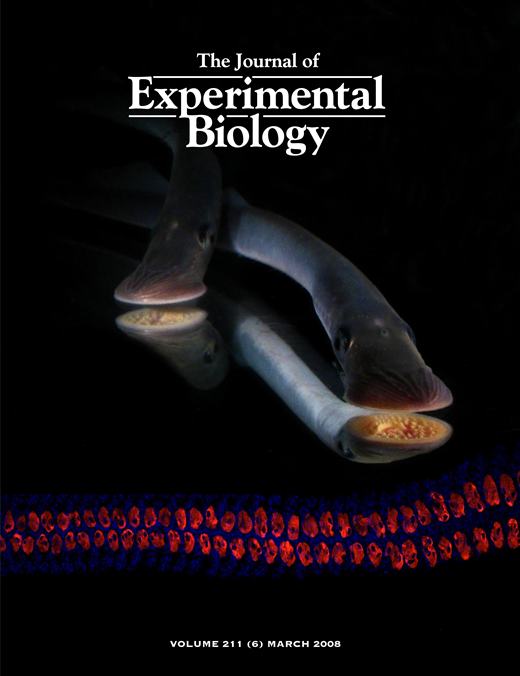
 journals.biologists.com
journals.biologists.com
Urea a source of nitrogen for corals
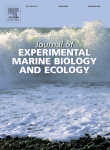
 www.sciencedirect.com
www.sciencedirect.com
Diazotrpophs a source of nitrogen for corals

 pubmed.ncbi.nlm.nih.gov
pubmed.ncbi.nlm.nih.gov
Context Dependant Effects of Nutrient Loading on the Coral-Algal Mutualism

 www.researchgate.net
www.researchgate.net
Nutrient transfer in a marine mutualism: patterns of ammonia excretion by anemonefish and uptake by giant sea anemones
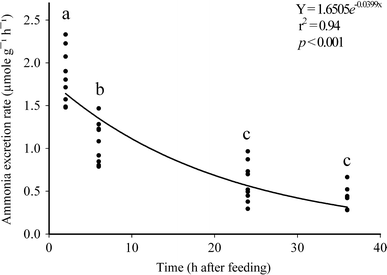
 link.springer.com
link.springer.com
Sugar enrichment provides evidence for a role of nitrogen fixation in coral bleaching
 onlinelibrary.wiley.com
onlinelibrary.wiley.com
Prevalence of potential nitrogen-fixing, green sulfur bacteria in the skeleton of reef-building coral Isopora palifera
Functional significance of dinitrogen fixation in sustaining coral productivity under oligotrophic conditions
https://pubmed.ncbi.nlm.nih.gov/26511052/
Sponge Loop Conserves resources in Coral Reefs (recycles C and N)
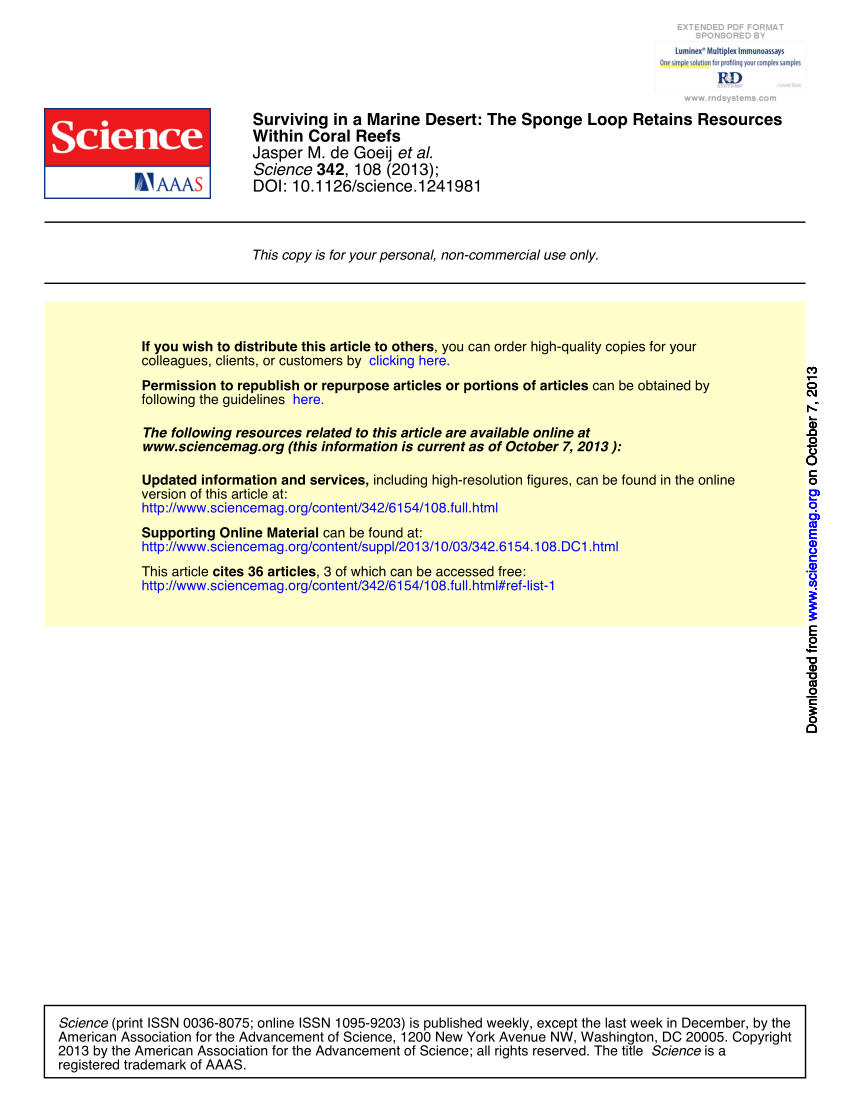
 www.researchgate.net
www.researchgate.net
DOC can be roughly seperated into three catagories, Labile, Semirefractory and Refractory. Most of the following papaers are looking mainly at Labile DOC. This will raise the hackles on some reefers but keep in mind Labile DOC and Carbon Dosing are synonamous. Jasper deGeoij's work shows cryptic sponges remove labile DOC about a thousand times faster than bacterioplankton. Included are links to some of the research showing what cryptic sponges are doing as well. ROhwer's book and video are excellent introductions to the subject of DOC and microbeial processses.
"Coral Reefs in the Microbial Seas" This video compliments Rohwer's book of the same title (Paper back is ~$20, Kindle is ~$10), both deal with the conflicting roles of the different types of DOC in reef ecosystems. While there is overlap bewteen his book and the video both have information not covered by the other and together give a broader view of the complex relationships found in reef ecosystems
Maintenance of Coral Reef Health (refferences at the end)
Global microbialization of coral reefs (Rohwer's DDAM Theory Proven)
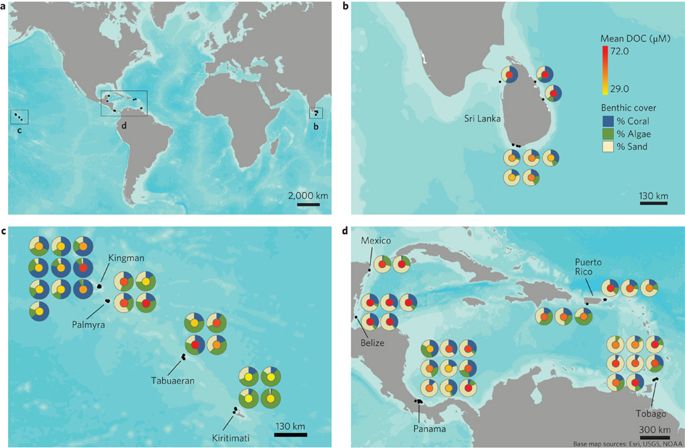
 www.nature.com
www.nature.com
long-term stony coral survival in the Coral Reef Exhibit at Reef HQ Aquarium, Townsville, Australia with an ATS was measured in days, not years. (See figure 3) (This page may have been removed, I can send you a copy of the .PDF if you're interested)
 www.burgerszoo.com
www.burgerszoo.com
Indirect effects of algae on coral: algae‐mediated, microbe‐induced coral mortality
 onlinelibrary.wiley.com
onlinelibrary.wiley.com
Influence of coral and algal exudates on microbially mediated reef metabolism.
Coral DOC improves oxygen (autotrophy), algae DOC reduces oxygen (heterotrophy).
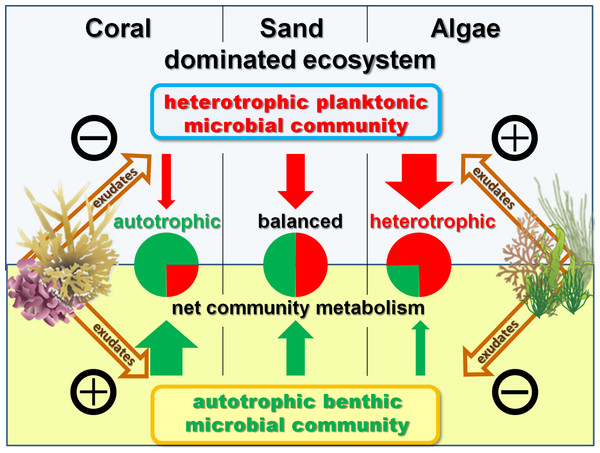
 peerj.com
peerj.com
Role of elevated organic carbon levels and microbial activity in coral mortality
Effects of Coral Reef Benthic Primary Producers on Dissolved Organic Carbon and Microbial Activity
Algae releases significantly more DOC into the water than coral.
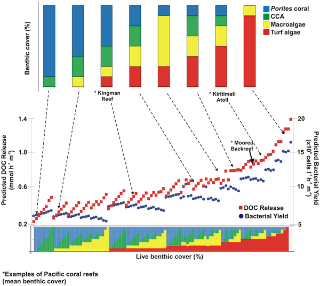
 journals.plos.org
journals.plos.org
Pathologies and mortality rates caused by organic carbon and nutrient stressors in three Caribbean coral species.
DOC caused coral death but not high nitrates, phosphates or ammonium.
Visualization of oxygen distribution patterns caused by coral and algae
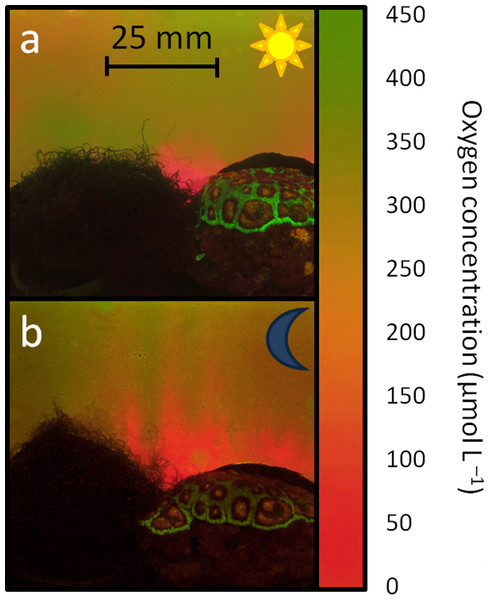
 peerj.com
peerj.com
Biological oxygen demand optode analysis of coral reef-associated microbial communities exposed to algal exudates
Exposure to exudates derived from turf algae stimulated higher oxygen drawdown by the coral-associated bacteria.

 www.ncbi.nlm.nih.gov
www.ncbi.nlm.nih.gov
Microbial ecology: Algae feed a shift on coral reefs
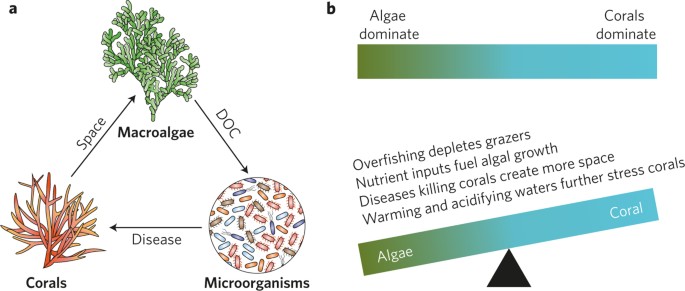
 www.nature.com
www.nature.com
Coral and macroalgal exudates vary in neutral sugar composition and differentially enrich reef bacterioplankton lineages.

 www.ncbi.nlm.nih.gov
www.ncbi.nlm.nih.gov
Sugar enrichment provides evidence for a role of nitrogen fixation in coral bleaching
 onlinelibrary.wiley.com
onlinelibrary.wiley.com
Elevated ammonium delays the impairment of the coral-dinoflagellate symbiosis during labile carbon pollution
(here's an argument for maintaining heavy fish loads if you're carbon dosing)
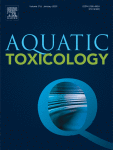
 www.sciencedirect.com
www.sciencedirect.com
Excess labile carbon promotes the expression of virulence factors in coral reef bacterioplankton
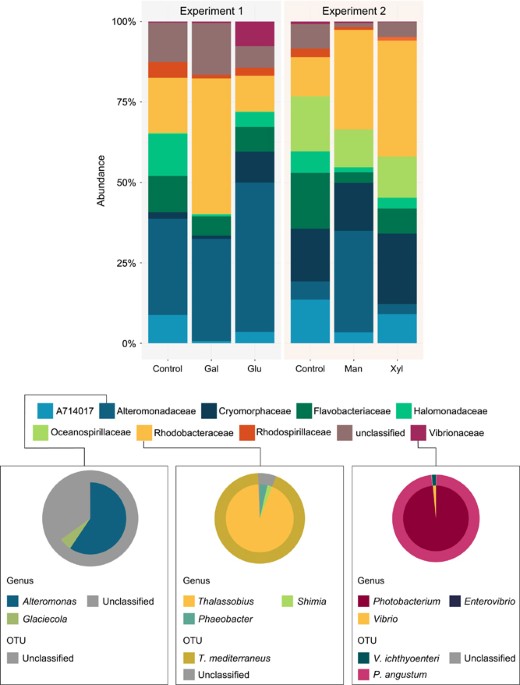
 www.nature.com
www.nature.com
Unseen players shape benthic competition on coral reefs.

 www.ncbi.nlm.nih.gov
www.ncbi.nlm.nih.gov
Allelochemicals Produced by Brown Macroalgae of the Lobophora Genus Are Active against Coral Larvae and Associated Bacteria, Supporting Pathogenic Shifts to Vibrio Dominance.

 www.ncbi.nlm.nih.gov
www.ncbi.nlm.nih.gov
Macroalgae decrease growth and alter microbial community structure of the reef-building coral, Porites astreoides.

 www.ncbi.nlm.nih.gov
www.ncbi.nlm.nih.gov
Macroalgal extracts induce bacterial assemblage shifts and sublethal tissue stress in Caribbean corals.

 www.ncbi.nlm.nih.gov
www.ncbi.nlm.nih.gov
Biophysical and physiological processes causing oxygen loss from coral reefs.
Global microbialization of coral reefs
DDAM Proven

 www.nature.com
www.nature.com
Coral Reef Microorganisms in a Changing Climate, Fig 3

 www.ncbi.nlm.nih.gov
www.ncbi.nlm.nih.gov
Ecosystem Microbiology of Coral Reefs: Linking Genomic, Metabolomic, and Biogeochemical Dynamics from Animal Symbioses to Reefscape Processes
BActeria and Sponges
lement cycling on tropical coral reefs.
This is Jasper de Geoij's ground breaking research on reef sponge finding some species process labile DOC 1000X faster than bacterioplankton. (The introduction is in Dutch but the content is in English.)
Sponge symbionts and the marine P cycle
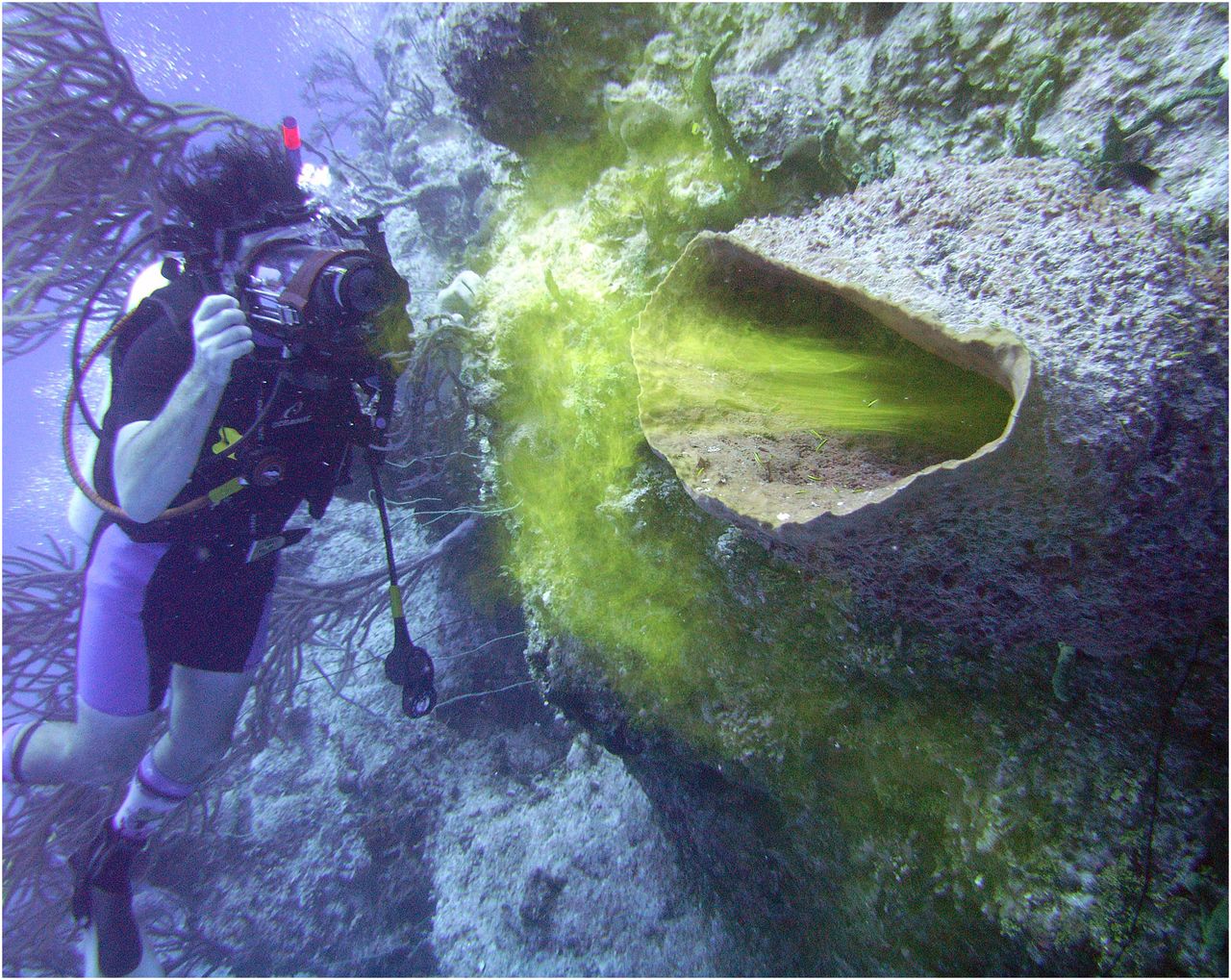
 www.pnas.org
www.pnas.org
Phosphorus sequestration in the form of polyphosphate by microbial symbionts in marine sponges
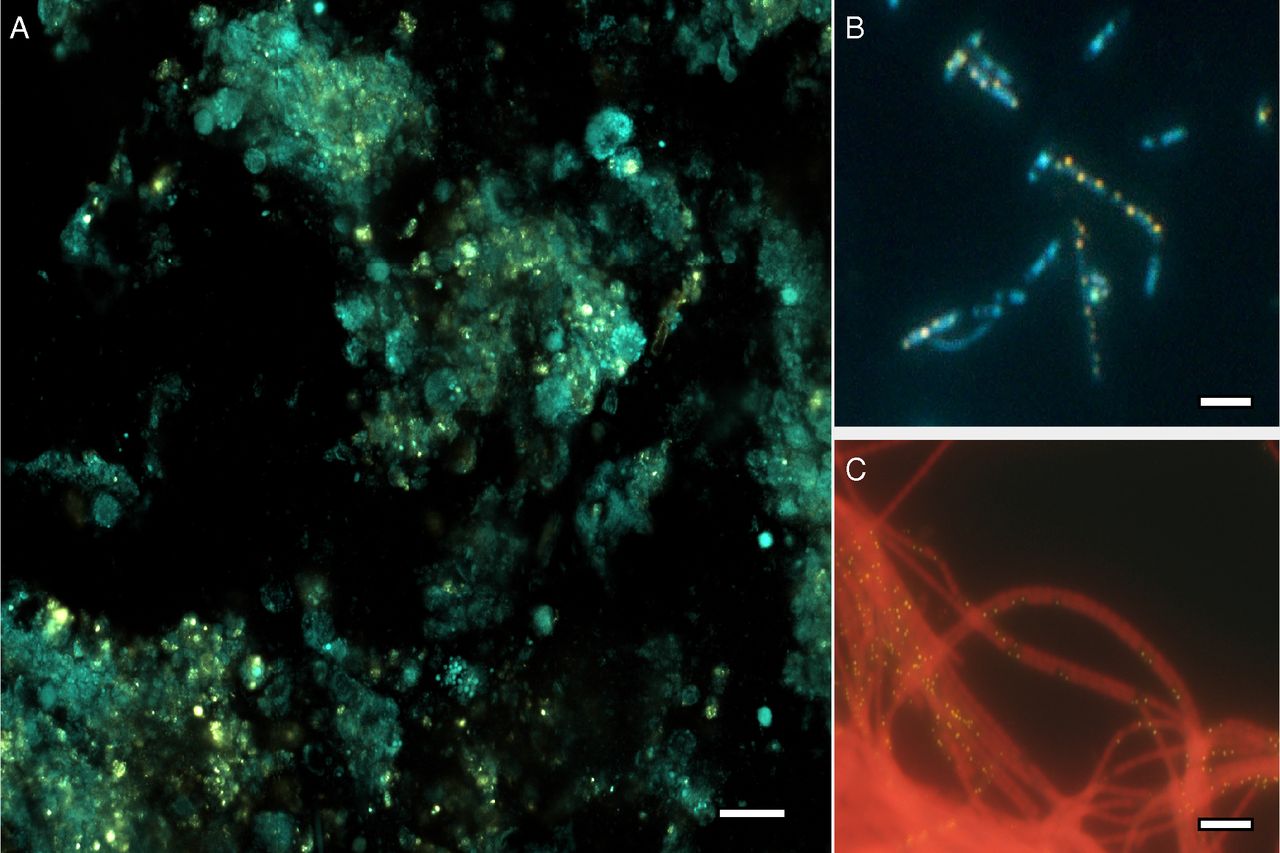
 www.pnas.org
www.pnas.org
Differential recycling of coral and algal dissolved organic matter via the sponge loop.
Sponges treat DOC from algae differently than DOC from corals
 besjournals.onlinelibrary.wiley.com
besjournals.onlinelibrary.wiley.com
A Vicious Circle? Altered Carbon and Nutrient Cycling May Explain the Low Resilience of Caribbean Coral Reefs
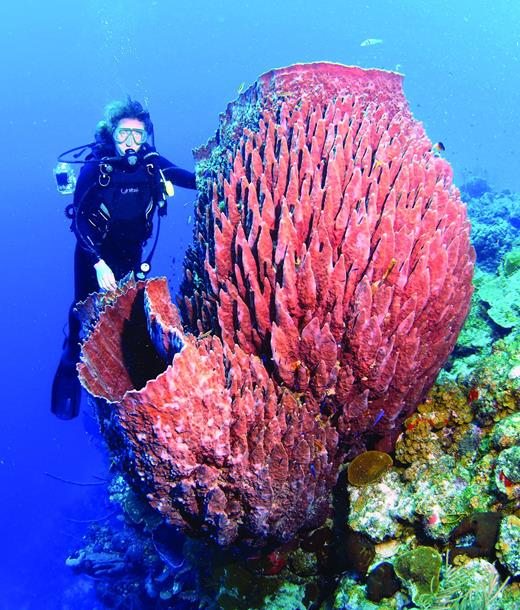
 academic.oup.com
academic.oup.com
Surviving in a Marine Desert The Sponge Loop Retains Resources Within Coral Reefs
Dissolved organic carbon and nitrogen are quickly processed by sponges and released back into the reef food web in hours as carbon and nitrogen rich detritus.

 www.researchgate.net
www.researchgate.net
Natural Diet of Coral-Excavating Sponges Consists Mainly of Dissolved Organic Carbon (DOC)

 www.ncbi.nlm.nih.gov
www.ncbi.nlm.nih.gov
The Role of Marine Sponges in Carbon and Nitrogen Cycles of COral Reefs and Nearshore Environments.
 search.proquest.com
search.proquest.com
Here's a data bomb for those interested in looking at the research. For those who don't want to go down the various rabbit holes what I've learned in 4 decades of keeping reefs systems is do your water changes, use urchins and herbivorus hermits and manual removal for any nuisance algae and keep an eye on alkalinity, calcium and magnesium and adjust what is being fed and done for the growth seen.
Nitrogen Stuff
Nitrogen cycling in hte coral holobiont
Ammonium Uptake by Symbiotic and Aposymbiotic Reef Corals
Ammonium Uptake by Symbiotic and Aposymbiotic Reef Corals: Ingenta Connect
Amino acids a source of nitrogen for corals

Uptake of dissolved free amino acids by the scleractinian coral Stylophora pistillata
SUMMARY. This study was designed to assess the importance of dissolved free amino acids (DFAA) as a nitrogen source for the scleractinian coral Stylophora pistillata. For this purpose, experiments were performed using 15N-enriched DFAAs, and %15N enrichment was measured both in animal tissue and...
Urea a source of nitrogen for corals

Urea uptake by the scleractinian coral Stylophora pistillata
Urea can be one of the major sources of nitrogen for phytoplankton, but little is known about its importance for corals. Experiments were therefore de…
Diazotrpophs a source of nitrogen for corals

Diazotrophs: a non-negligible source of nitrogen for the tropical coral Stylophora pistillata - PubMed
Corals are mixotrophs: they are able to fix inorganic carbon through the activity of their symbiotic dinoflagellates and to gain nitrogen from predation on plankton and uptake of dissolved organic and inorganic nutrients. They also live in close association with diverse diazotrophic communities...
Context Dependant Effects of Nutrient Loading on the Coral-Algal Mutualism

Context-dependent effects of nutrient loading on the coral-algal mutualism | Request PDF
Request PDF | Context-dependent effects of nutrient loading on the coral-algal mutualism | Human-mediated increases in nutrient availability alter patterns of primary production, impact species diversity, and threaten ecosystem function.... | Find, read and cite all the research you need on...
Nutrient transfer in a marine mutualism: patterns of ammonia excretion by anemonefish and uptake by giant sea anemones

Nutrient transfer in a marine mutualism: patterns of ammonia excretion by anemonefish and uptake by giant sea anemones - Marine Biology
Many symbioses involve multiple partners in complex, multi-level associations, yet little is known concerning patterns of nutrient transfer in multi-level marine mutualisms. We used the anemonefish symbiosis as a model system to create a balance sheet for nitrogen production and transfer within...
Sugar enrichment provides evidence for a role of nitrogen fixation in coral bleaching
Error - Cookies Turned Off
Prevalence of potential nitrogen-fixing, green sulfur bacteria in the skeleton of reef-building coral Isopora palifera
Functional significance of dinitrogen fixation in sustaining coral productivity under oligotrophic conditions
https://pubmed.ncbi.nlm.nih.gov/26511052/
Sponge Loop Conserves resources in Coral Reefs (recycles C and N)

(PDF) 2013 deGoeij Science Sponge loop
PDF | On Jun 23, 2015, Jasper M de Goeij and others published 2013 deGoeij Science Sponge loop | Find, read and cite all the research you need on ResearchGate
Carbon Stuff
DOC can be roughly seperated into three catagories, Labile, Semirefractory and Refractory. Most of the following papaers are looking mainly at Labile DOC. This will raise the hackles on some reefers but keep in mind Labile DOC and Carbon Dosing are synonamous. Jasper deGeoij's work shows cryptic sponges remove labile DOC about a thousand times faster than bacterioplankton. Included are links to some of the research showing what cryptic sponges are doing as well. ROhwer's book and video are excellent introductions to the subject of DOC and microbeial processses.
"Coral Reefs in the Microbial Seas" This video compliments Rohwer's book of the same title (Paper back is ~$20, Kindle is ~$10), both deal with the conflicting roles of the different types of DOC in reef ecosystems. While there is overlap bewteen his book and the video both have information not covered by the other and together give a broader view of the complex relationships found in reef ecosystems
Maintenance of Coral Reef Health (refferences at the end)
Global microbialization of coral reefs (Rohwer's DDAM Theory Proven)

Global microbialization of coral reefs - Nature Microbiology
Analysis of 60 sites in three ocean basins suggests that overgrowth of fleshy algae on coral reefs supports higher microbial abundances dominated by copiotrophic, potentially pathogenic bacteria via the provision of dissolved inorganic carbon.
long-term stony coral survival in the Coral Reef Exhibit at Reef HQ Aquarium, Townsville, Australia with an ATS was measured in days, not years. (See figure 3) (This page may have been removed, I can send you a copy of the .PDF if you're interested)
Something went wrong | Royal Burgers' Zoo
Indirect effects of algae on coral: algae‐mediated, microbe‐induced coral mortality
Error - Cookies Turned Off
Influence of coral and algal exudates on microbially mediated reef metabolism.
Coral DOC improves oxygen (autotrophy), algae DOC reduces oxygen (heterotrophy).

Influence of coral and algal exudates on microbially mediated reef metabolism
Benthic primary producers in tropical reef ecosystems can alter biogeochemical cycling and microbial processes in the surrounding seawater. In order to quantify these influences, we measured rates of photosynthesis, respiration, and dissolved organic carbon (DOC) exudate release by the dominant...
Role of elevated organic carbon levels and microbial activity in coral mortality
Effects of Coral Reef Benthic Primary Producers on Dissolved Organic Carbon and Microbial Activity
Algae releases significantly more DOC into the water than coral.
Effects of Coral Reef Benthic Primary Producers on Dissolved Organic Carbon and Microbial Activity
Benthic primary producers in marine ecosystems may significantly alter biogeochemical cycling and microbial processes in their surrounding environment. To examine these interactions, we studied dissolved organic matter release by dominant benthic taxa and subsequent microbial remineralization in...
Pathologies and mortality rates caused by organic carbon and nutrient stressors in three Caribbean coral species.
DOC caused coral death but not high nitrates, phosphates or ammonium.
Visualization of oxygen distribution patterns caused by coral and algae

Visualization of oxygen distribution patterns caused by coral and algae
Planar optodes were used to visualize oxygen distribution patterns associated with a coral reef associated green algae (Chaetomorpha sp.) and a hermatypic coral (Favia sp.) separately, as standalone organisms, and placed in close proximity mimicking coral-algal interactions. Oxygen patterns were...
Biological oxygen demand optode analysis of coral reef-associated microbial communities exposed to algal exudates
Exposure to exudates derived from turf algae stimulated higher oxygen drawdown by the coral-associated bacteria.

Biological oxygen demand optode analysis of coral reef-associated microbial communities exposed to algal exudates
Algae-derived dissolved organic matter has been hypothesized to induce mortality of reef building corals. One proposed killing mechanism is a zone of hypoxia created by rapidly growing microbes. To investigate this hypothesis, biological oxygen demand ...
Microbial ecology: Algae feed a shift on coral reefs

Microbial ecology: Algae feed a shift on coral reefs - Nature Microbiology
Human pressures on coral reefs are giving macroalgae a competitive advantage over reef-building corals. These algae support larger, and potentially pathogenic, microbial populations that are metabolically primed for less-efficient, yet faster, carbohydrate remineralization, perpetuating a...
Coral and macroalgal exudates vary in neutral sugar composition and differentially enrich reef bacterioplankton lineages.

Coral and macroalgal exudates vary in neutral sugar composition and differentially enrich reef bacterioplankton lineages - PubMed
Increasing algal cover on tropical reefs worldwide may be maintained through feedbacks whereby algae outcompete coral by altering microbial activity. We hypothesized that algae and coral release compositionally distinct exudates that differentially alter bacterioplankton growth and community...
Sugar enrichment provides evidence for a role of nitrogen fixation in coral bleaching
Error - Cookies Turned Off
Elevated ammonium delays the impairment of the coral-dinoflagellate symbiosis during labile carbon pollution
(here's an argument for maintaining heavy fish loads if you're carbon dosing)

Elevated ammonium delays the impairment of the coral-dinoflagellate symbiosis during labile carbon pollution
Labile dissolved organic carbon (DOC) is a major pollutant in coastal marine environments affected by anthropogenic impacts, and may significantly con…
Excess labile carbon promotes the expression of virulence factors in coral reef bacterioplankton

Excess labile carbon promotes the expression of virulence factors in coral reef bacterioplankton - The ISME Journal
Coastal pollution and algal cover are increasing on many coral reefs, resulting in higher dissolved organic carbon (DOC) concentrations. High DOC concentrations strongly affect microbial activity in reef waters and select for copiotrophic, often potentially virulent microbial populations. High...
Unseen players shape benthic competition on coral reefs.

Unseen players shape benthic competition on coral reefs - PubMed
Recent work has shown that hydrophilic and hydrophobic organic matter (OM) from algae disrupts the function of the coral holobiont and promotes the invasion of opportunistic pathogens, leading to coral morbidity and mortality. Here we refer to these dynamics as the (3)DAM [dissolved organic...
Allelochemicals Produced by Brown Macroalgae of the Lobophora Genus Are Active against Coral Larvae and Associated Bacteria, Supporting Pathogenic Shifts to Vibrio Dominance.

Allelochemicals Produced by Brown Macroalgae of the Lobophora Genus Are Active against Coral Larvae and Associated Bacteria, Supporting Pathogenic Shifts to Vibrio Dominance - PubMed
Diverse microbial communities associate with coral tissues and mucus, providing important protective and nutritional services, but once disturbed, the microbial equilibrium may shift from a beneficial state to one that is detrimental or pathogenic. Macroalgae (e.g., seaweeds) can physically and...
Macroalgae decrease growth and alter microbial community structure of the reef-building coral, Porites astreoides.

Macroalgae decrease growth and alter microbial community structure of the reef-building coral, Porites astreoides - PubMed
With the continued and unprecedented decline of coral reefs worldwide, evaluating the factors that contribute to coral demise is of critical importance. As coral cover declines, macroalgae are becoming more common on tropical reefs. Interactions between these macroalgae and corals may alter the...
Macroalgal extracts induce bacterial assemblage shifts and sublethal tissue stress in Caribbean corals.

Macroalgal extracts induce bacterial assemblage shifts and sublethal tissue stress in Caribbean corals - PubMed
Benthic macroalgae can be abundant on present-day coral reefs, especially where rates of herbivory are low and/or dissolved nutrients are high. This study investigated the impact of macroalgal extracts on both coral-associated bacterial assemblages and sublethal stress response of corals. Crude...
Biophysical and physiological processes causing oxygen loss from coral reefs.
Global microbialization of coral reefs
DDAM Proven

Global microbialization of coral reefs - Nature Microbiology
Analysis of 60 sites in three ocean basins suggests that overgrowth of fleshy algae on coral reefs supports higher microbial abundances dominated by copiotrophic, potentially pathogenic bacteria via the provision of dissolved inorganic carbon.
Coral Reef Microorganisms in a Changing Climate, Fig 3

Coral Reef Microorganisms in a Changing Climate
Coral reefs are one of the most diverse and productive ecosystems on the planet, yet they have suffered tremendous losses due to anthropogenic disturbances and are predicted to be one of the most adversely affected habitats under future climate change ...
Ecosystem Microbiology of Coral Reefs: Linking Genomic, Metabolomic, and Biogeochemical Dynamics from Animal Symbioses to Reefscape Processes
Sponge Stuff
BActeria and Sponges
lement cycling on tropical coral reefs.
This is Jasper de Geoij's ground breaking research on reef sponge finding some species process labile DOC 1000X faster than bacterioplankton. (The introduction is in Dutch but the content is in English.)
Sponge symbionts and the marine P cycle

Sponge symbionts and the marine P cycle
Marine sponges are ubiquitous colonizers of shallow, clear-water environments in the oceans (1, 2). Sponges have emerged as significant mediators of biogeochemical fluxes in coastal zones by virtue of respiring organic matter and facilitating both the consumption and release of nutrients (3, 4)...
Phosphorus sequestration in the form of polyphosphate by microbial symbionts in marine sponges

Phosphorus sequestration in the form of polyphosphate by microbial symbionts in marine sponges
Coral reefs are highly productive ecosystems that raise a conundrum called “Darwin’s paradox”: How can high production flourish in low-nutrient conditions? We show here that in three abundant Caribbean sponges, the granules that have been commonly observed in sponge tissue for decades are...
Differential recycling of coral and algal dissolved organic matter via the sponge loop.
Sponges treat DOC from algae differently than DOC from corals
Error - Cookies Turned Off
A Vicious Circle? Altered Carbon and Nutrient Cycling May Explain the Low Resilience of Caribbean Coral Reefs

A Vicious Circle? Altered Carbon and Nutrient Cycling May Explain the Low Resilience of Caribbean Coral Reefs
Coral reefs are economically important ecosystems that have suffered unprecedented losses of corals in the recent past. Why have Caribbean reefs in particu
Surviving in a Marine Desert The Sponge Loop Retains Resources Within Coral Reefs
Dissolved organic carbon and nitrogen are quickly processed by sponges and released back into the reef food web in hours as carbon and nitrogen rich detritus.

(PDF) 2013 deGoeij Science Sponge loop
PDF | On Jun 23, 2015, Jasper M de Goeij and others published 2013 deGoeij Science Sponge loop | Find, read and cite all the research you need on ResearchGate
Natural Diet of Coral-Excavating Sponges Consists Mainly of Dissolved Organic Carbon (DOC)

Natural Diet of Coral-Excavating Sponges Consists Mainly of Dissolved Organic Carbon (DOC)
Coral-excavating sponges are the most important bioeroders on Caribbean reefs and increase in abundance throughout the region. This increase is commonly attributed to a concomitant increase in food availability due to eutrophication and pollution. We ...
The Role of Marine Sponges in Carbon and Nitrogen Cycles of COral Reefs and Nearshore Environments.
The role of marine sponges in carbon and nitrogen cycles of coral reef and nearshore environments - ProQuest
Explore millions of resources from scholarly journals, books, newspapers, videos and more, on the ProQuest Platform.
Thanks. I'll see how it turns out not cleaning the filter.I’d consider not cleaning that canister until flow impeded. An option being a combination of pumice and smaller gravel to trap detritus and allow it to decompose naturally. Remaining component being mulm (hummus) which takes less space and longer to clog. BTW, not convinced that cleaning bio media even in tap kills the underlying bacteria. Learned that long ago and used to not worry about that but current setup doesn’t allow me to do that but a test I’ll at some point conduct. Perhaps those with an actual scientific knowledge of nitrifying/denitrifying bacteria can confirm or correct my belief.
Since the filter is made from several layers of filtermat (2 x 3cm + 4 x 5cm thickness) I can clean the peices of mats as they start to clog, leaving the others
Last edited:
That would imply some of the bacteria died off. Going dormnt wouldn't make sense. Was that the overall conclusion?There is a thread about this. Using live rock. Rock after a scrub in tap was still able to clear ammonia. Not as fast though.
Do I see us going back to wet/dry filters soon!!???
As for wet dry revivals. With the advent of carbon dosing then the original fear of them being nitrate factories no longer exist. Why bother with mechanical removal of skimmate. Just let nature do it's thing. Although I find canisters or undergravel plates more enjoyable since they don't make anywhere near the same noise and can eliminate the need for a sump although AIO solutions more practical and hide equipment and path I'm taking for my main build.
To me, Berlin same as clinical to an extent. I'm too lazy to be constantly cleaning and why I went away from clinical and never adapted Berlin. Natural seemed more appealing and carbon dosing the holly grail I been seeking since the 70s. Although that white slime bacteria now an issue but I'll have to find a way to deal with it. Gonna keep it simple.
Ran a canister in the 90s. Rarely opened it up other than when flow was overly reduced or water yellowed. Found out that if left alone long enough and flow reduced that my nitrates hovered around 20 ppm. apparently denitrification was occurring my only conclusion. No WC. Worked long hours and this was from necessity to be lazy than because I had a plan although this wasn't my first foray into no WC but first with a canister. Sometimes leaving it alone isn't such a bad thing. However, this was fish only yet heavily populated. Was using biochem stars. Might have had some floss. Ran Chemi-pure. Kept it simple. No nuisance algae. No cyano. No dino. Lights on from 8am to past 9pm when I returned home and sometimes the wee hours of the next day if I went out direct from work. I knew better but had a life and yet it worked.Thanks. I'll see how it turns out not cleaning the filter.
Since the filter is made from several layers of filtermat (2 x 3cm + 4 x 5cm thickness) I can clean the peices of mats as they start to clog, leaving the others
Similar threads
- Replies
- 7
- Views
- 146
- Replies
- 38
- Views
- 690
- Replies
- 8
- Views
- 119
- Replies
- 4
- Views
- 167
New Posts
-
-
Nebraska Live Goods SPONSOR Fresh Live 10 Species Phytoplankton Blend
- Latest: Reef By Steele
-
-
-

















